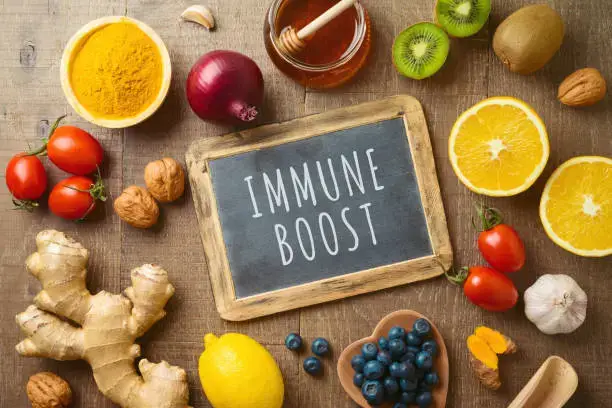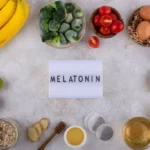We envision a world where everyone has the tools and knowledge to live a balanced, healthy, and fulfilling life. By providing reliable resources, personalized programs, and community support, we aim to be a beacon of hope for those on their health journey.
Table of Contents
Introduction to SNAP

The Supplemental Nutrition Assistance Program (SNAP), formerly known as food stamps, is a critical federal assistance initiative aimed at combating food insecurity within the United States. Established through the Food Stamp Act of 1964, SNAP seeks to provide nutrition benefits to eligible low-income individuals and families, allowing them to purchase food necessary for a healthy lifestyle. Over the decades, SNAP has evolved to include a variety of modernized components, best way to boost your immune system; responding to the changing needs of the populace.
SNAP’s primary purpose is to alleviate hunger and improve the dietary choices of recipients, thereby enhancing overall public health. It achieves this by offering financial assistance that empowers participants to buy nutritious food, including fruits, vegetables, whole grains, and dairy products. The program effectively plays a significant role in bridging the gap for those who find themselves facing economic hardships.
Eligibility Requirements
The Supplemental Nutrition Assistance Program (SNAP) offers vital nutritional support to eligible individuals and families across the United States. To qualify for SNAP benefits, applicants must meet specific eligibility criteria, including income limits, residency requirements, and the necessary documentation for application. Understanding these requirements can help individuals determine their potential for assistance.
One of the primary eligibility factors is household income. The U.S. Department of Agriculture (USDA) generally sets an income limit for SNAP based on the federal poverty level. Households must demonstrate that their gross monthly income falls below this threshold. Furthermore, the calculation often considers factors such as the number of members in the household and potential deductions for expenses like childcare and medical costs. This ensures that the program targets assistance towards those experiencing genuine financial hardship.
In addition to income considerations, residency is another essential eligibility factor. Applicants must be U.S. residents and reside in the state where they apply for benefits. Each state may have its specific rules regarding residency, but generally, applicants must work within the confines of their state’s SNAP program guidelines.
Documentation is a critical aspect of the application process. Individuals must provide necessary information such as proof of identity, income verification, and residency documentation. This information aids in the assessment of eligibility and ensures that benefits are allocated to those who truly require assistance.
It is also important to note that specific groups may have different eligibility requirements. For instance, students enrolled at least half-time and those aged 60 or older may face varied criteria. Additionally, individuals with disabilities may have specific provisions that further influence their eligibility. Understanding these nuances is crucial for potential applicants aiming to navigate the SNAP application process effectively.
How to Apply for SNAP

Applying for the Supplemental Nutrition Assistance Program (SNAP) can seem daunting initially, but knowing the available methods and following a systematic approach can simplify the process. There are three primary ways to apply: online, in-person, and by phone. Each method has its unique features and may be suited to different individual circumstances.
First, the online application process is typically the most convenient method for many applicants. Most states have a dedicated SNAP website where eligible individuals can fill out their application. To apply online, applicants should gather relevant information, such as personal identification, income details, and household size, before starting the application. This preparation is crucial, as it allows the applicant to complete the form accurately and efficiently. After the application is submitted, it is advisable to check the status online or follow up with the local agency.
For those who prefer a more personal approach, in-person applications are available at local SNAP offices. Applicants can visit these agencies and receive one-on-one assistance from staff who can guide them through the application process. It may be beneficial to schedule an appointment to avoid long wait times. Bringing all required documents will ensure that the application process goes smoothly.
Lastly, applying by phone is another option that can accommodate those who may have difficulties accessing the internet or visiting local offices. Applicants can contact their state’s SNAP hotline to receive guidance and assistance in completing the application over the phone. Although this method may take longer, it proves to be a helpful resource for individuals in need of support.
Regardless of the method chosen, providing accurate and complete information is essential for a successful SNAP application. Ensuring all documentation is prepared and submitted promptly will help expedite the process and increase the chances of receiving benefits without delays.
Benefits and Funding of SNAP
The Supplemental Nutrition Assistance Program (SNAP) provides critical assistance to millions of Americans, helping them to afford nutritious food. The benefits of SNAP are calculated based on numerous factors, including household size, income, and certain allowable deductions. In general, the program aims to ensure that families have access to a minimum amount of food necessary for health and well-being.
For instance, the maximum benefits vary depending on household composition. As of October 2023, the maximum benefit amount for a household of one is approximately $281 per month, while a household of four can expect a maximum of around $939 monthly. These amounts are adjusted periodically to reflect changes in the cost of living, mandating a response to economic inflation. Part of the calculation involves the net income of each household; those with lower incomes generally receive higher benefit amounts, ensuring that support is directed where it is most needed.
Moreover, the funding for SNAP involves a collaborative effort between federal and state governments. The federal government primarily provides the financial resources necessary to sustain the program, covering the costs of benefits issued to participants. Each state administers its own SNAP program using federally allocated funds, which can lead to variations in implementation practices and eligibility assessments. States may also contribute additional funding to enhance benefits or facilitate outreach efforts to ensure that eligible individuals are informed about the program.
The involvement of both federal and state authorities ensures that SNAP can adapt to the specific needs of diverse populations, while also functioning as an integral component of the United States’ broader social safety net. By understanding the calculation of benefits and the funding mechanisms, individuals can better appreciate the role of SNAP in supporting food security across the nation.
Using SNAP Benefits

The Supplemental Nutrition Assistance Program (SNAP) offers essential support to millions of individuals and families by providing them with financial resources to purchase food. Utilizing SNAP benefits effectively involves understanding the specific food items that can be acquired and the mechanisms through which these benefits operate. A key component in this process is the Electronic Benefits Transfer (EBT) card, which serves as an electronic means for beneficiaries to access their allocated funds.
SNAP benefits can be used to purchase a variety of food products, including fruits, vegetables, dairy products, meats, poultry, fish, breads, cereals, and seeds or plants intended for food production. Generally, the program aims to encourage the consumption of nutritious foods, thereby improving the overall diet of participants. However, there are certain restrictions regarding which items can be bought with SNAP benefits. For instance, households cannot use their benefits to purchase alcoholic beverages, tobacco products, or hot prepared foods. This ensures that the assistance is directed towards healthy food options that contribute to the well-being of recipients.
When utilizing their benefits, recipients present their EBT card at participating grocery stores and farmers’ markets. Upon swiping the card, the amount of eligible purchases is deducted from the balance available on the card. Each state manages its own SNAP program which may affect the availability and specific capabilities of the EBT system, but the core functionality remains the same across the nation. Users of SNAP are encouraged to familiarize themselves with local grocery stores that accept EBT, along with understanding the various promotions that may exist to maximize their purchasing power. In sum, aware participants can make informed choices that align with the goals of the SNAP program, thereby enhancing access to nutritious foods.
Impact of SNAP on Public Health
The Supplemental Nutrition Assistance Program (SNAP) plays a significant role in addressing public health issues, particularly in the context of food security and nutrition for low-income populations. One of the primary aims of SNAP is to alleviate hunger, which is a fundamental requirement for maintaining overall health. Research has consistently shown that SNAP benefits help reduce food insecurity, allowing individuals and families to access a more balanced and nutritious diet. This access contributes to improved physical and mental health outcomes.
In addition to merely providing financial assistance for purchasing food, SNAP also integrates nutrition education initiatives aimed at educating beneficiaries about healthy eating habits and budgeting. Programs that accompany SNAP benefits often offer cooking classes, grocery store tours, and information about making healthier choices on a limited budget. These educational efforts not only enhance food-related knowledge but also empower participants to make healthier decisions, thereby promoting long-term dietary changes that can lead to better health outcomes.
Research has indicated a correlation between SNAP participation and beneficial health effects, such as reduced rates of chronic diseases, including diabetes, obesity, and cardiovascular conditions among enrolled families. For instance, studies reveal that children in households receiving SNAP benefits exhibit improved growth patterns and lower rates of obesity when compared to their food-insecure peers not utilizing the program. Communities also benefit from the economic stimulation provided by SNAP as participants are able to purchase food locally, contributing to local economies and promoting healthier community environments.
While challenges remain, such as ensuring program accessibility and adequate funding, the impact of SNAP on public health continues to be profound. By alleviating food insecurity and promoting nutrition education, SNAP serves as a vital tool in fostering healthier populations and addressing the broader implications of hunger and nutrition within society.
Challenges and Criticisms of SNAP
The Supplemental Nutrition Assistance Program (SNAP) has long been a topic of debate, and its implementation faces various challenges and criticisms. One of the primary issues highlighted by opponents is accessibility. Despite being designed to assist low-income families in obtaining necessary food, several barriers exist that hinder individuals from fully utilizing the program. Many eligible applicants encounter complex and time-consuming application processes, leading to significant delays and deterrents. Additionally, certain populations, such as the elderly or disabled, may find it particularly challenging to navigate these systems, further exacerbating food insecurity among these demographics.
Another substantial concern is the stigma associated with receiving SNAP benefits. Many recipients report feelings of shame or embarrassment in using their EBT cards, which can deter individuals from seeking assistance. This social stigma often extends throughout communities, perpetuating negative stereotypes about those who rely on governmental aid. Critics argue that such stigma can discourage eligible individuals from applying, undermining the program’s intended purpose of mitigating food insecurity.
Moreover, various stakeholders engage in policy debates concerning SNAP funding and eligibility. Proponents of the program argue that adequate funding is essential to meet the growing demand, especially during economic downturns or crises. Conversely, critics urge for reforms aimed at reducing expenses and improving efficiency. They highlight instances where funds may be misallocated or suggest imposing stricter eligibility criteria to ensure that assistance is directed to those most in need. This tension between funding sustainability and accessibility creates a complex landscape for policymakers as they seek to balance efficient resource allocation while alleviating hunger across diverse communities.
Recent Changes and Reforms in SNAP
The Supplemental Nutrition Assistance Program (SNAP) has seen several important changes and reforms in recent years, particularly in response to evolving economic conditions and growing concern over food insecurity. One of the most significant adjustments has been in the eligibility criteria, with many states implementing measures to broaden access to assistance for families in need. For instance, some states have opted to temporarily suspend work requirements that were previously mandated, thus allowing more individuals to receive benefits during times of economic downturn.
Moreover, the federal government has increased flexibility for states, enabling them to adjust their SNAP benefit calculations. As part of ongoing reforms, the U.S. Department of Agriculture (USDA) has introduced provisions for state agencies to apply for waivers, permitting them to enhance their benefit allotments. These provisions are especially relevant in the context of inflation and rising food costs, which disproportionately affect low-income individuals and families. By allowing states to provide additional support, these changes aim to alleviate some of the pressures faced by SNAP beneficiaries.
Another critical aspect of recent reforms includes a renewed focus on food justice and nutrition. Policymakers are increasingly prioritizing the nutrition quality of foods purchased through SNAP benefits. The USDA has initiated pilot programs aimed at encouraging healthier food choices among recipients, which reflects a growing understanding of the link between nutrition and public health. Additionally, there have been enhanced efforts to streamline application processes, making it easier for eligible individuals to access SNAP benefits without unnecessary bureaucratic hurdles.
In conclusion, these recent changes and reforms in SNAP represent a significant shift in approach to tackling food insecurity, improving accessibility, and enhancing the nutritional quality of assistance. Continued monitoring and evaluation will be essential to ensure that these reforms effectively address the needs of vulnerable populations nationwide.
Resources for SNAP Participants
The Supplemental Nutrition Assistance Program (SNAP) aims to provide essential food assistance to low-income individuals and families. For those enrolled in SNAP or contemplating the program, numerous resources can significantly enhance their experience and access to nutritious food. These resources encompass state-specific information, food pantries, nutrition education programs, and supportive local community organizations.
Each state operates its own SNAP administration, which influences eligibility, benefits, and resources available. Therefore, it is crucial for participants to familiarize themselves with their state-specific SNAP website. These resources often furnish valuable insights regarding application processes, recertification, and program updates. For example, the United States Department of Agriculture (USDA) maintains a comprehensive list of state SNAP agencies that you can access here.
Food pantries represent a vital resource for SNAP participants. Many charitable organizations and food banks operate community food pantry systems that provide supplemental food stocks for those in need. Locating a nearby food pantry can be accomplished through local food bank websites or assistance programs that connect individuals with food access points. Partners like Feeding America work to bridge this gap and can be found online for additional support.
Moreover, nutrition education programs play a pivotal role in fostering healthier eating habits among SNAP recipients. Initiatives like the USDA’s SNAP-Ed program offer valuable resources, classes, and guidance on meal planning, budgeting, and food preparation. These programs are designed to empower participants with knowledge and skills to make informed dietary choices.
Finally, local community organizations remain steadfast supporters of SNAP participants, offering various resources such as workshops, advocacy, and outreach services. Collaborating with these organizations can further assist participants in navigating available benefits and maximizing their SNAP experience.
Did You Try this tips ?
There are no reviews yet. Be the first one to write one.
blood work brain health cancer treatment climate health diabetes treatments digestive health disease management disease mapping exercise plan fitness tips hair care hair growth hair treatment health apps health foods health insurance health tips healthy habits healthy recipes heart disease home workouts immune boost immune foods keto plan keto recipes kidney disease lifestyle diseases meal delivery medicine innovation melanoma treatment mental health morning exercise natural remedies non melanoma nutritional advice nutrition assistance raw nutrition skin cancer skin care skin health sleep exercise sleep technology telemedicine services viral threats weight loss
supplemental nutrition assistance program you need to now 1
The Supplemental Nutrition Assistance Program (SNAP), formerly known as food stamps, is a critical federal assistance initiative aimed at combating food insecurity within the United States. Established through the Food Stamp Act of 1964, SNAP seeks to provide nutrition benefits to eligible low-income individuals and families, allowing them to purchase food necessary for a healthy lifestyle. Over the decades, SNAP has evolved to include a variety of modernized components, best way to boost your immune system; responding to the changing needs of the populace.








